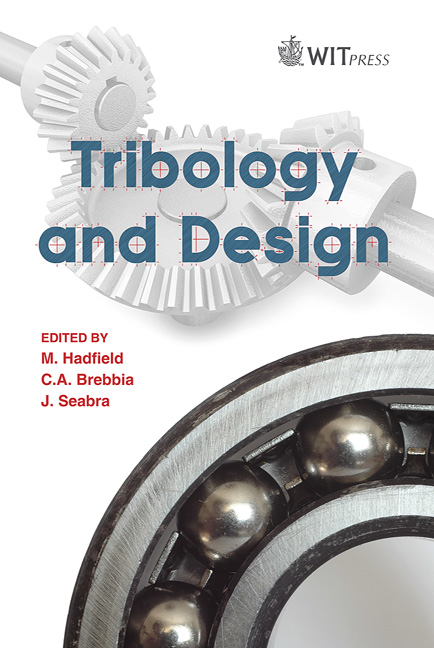Sliding Mechanisms In Tribological Contact Of TMD-C Sputtered Coatings
Price
Free (open access)
Transaction
Volume
66
Pages
12
Page Range
195 - 206
Published
2010
Size
2,062 kb
Paper DOI
10.2495/TD100171
Copyright
WIT Press
Author(s)
T. Polcar & A. Cavaleiro
Abstract
In this paper, results on the tribological behaviour of nanocomposite coatings composed by nanoplatelets of transition metal dichalcogenides (TMD) immersed in a C-rich amorphous matrix will be presented. It will be shown that this microstructure will allow low friction coefficients in wide range of surrounding environments, since TMD platelets are re-oriented in the C-matrix as a consequence of the mechanical energy liberated in the sliding contact. In this case, the oxidation of the TMD material is avoided due to the protection achieved by the C matrix. Examples of TMD-C coatings of the W-S-C and Mo- Se-C systems will be presented and discussed. After tribological characterization of the coatings in different environments under different loading conditions experimental evidence of the wear mechanisms will be given by cross section transmission electron microscopy, Raman spectroscopy and Auger electron spectroscopy. Keywords: sliding mechanisms, self-lubrication coatings, low friction, TMD coatings. 1 Introduction The idea behind the use of composite coatings, including different well-known phase materials with good tribological performance, was to achieve a synergetic effect that can overcome the individual drawbacks of each specific phase in low friction demands. One of the most interesting materials for the nanocomposite design of low friction coatings is any member of the transition metal
Keywords
sliding mechanisms, self-lubrication coatings, low friction, TMD coatings





